Restoring the land by slaying weeds and flaming seeds
Restoring the land by slaying weeds and flaming seeds

Associate Professor Andrew Guzzomi leads the CEI:AgER team at UWA based at the Shenton Park Research Facility
Degraded or mined regions of land are difficult to revegetate. Whilst regulatory approval for land use includes the requirement for reintroducing native plant species, the seeds have a zero to low rate of establishment using conventional methods.
In the agricultural farming regions, herbicide resistant weeds in broad acre cropping are a major challenge. The common approach to combat weeds is to treat them with herbicides, which results in increasing instances of herbicide resistance and poses environmental and health concerns. These methods are being challenged with novel approaches that use sensor precision to activate targeted tillage rather than herbicide to remove weeds.
Associate Professor Andrew Guzzomi, The University of Western Australia’s (UWA) inaugural agricultural engineer, is the founder and Director of the UWA Centre for Engineering Innovation: Agriculture & Ecological Restoration (CEI:AgER). He and his team work with leading end-users and industries to offer innovative insights to design, build and commission new machinery to meet the challenges faced in agriculture and the environment.
Revegetation of native plants
The mining sector forms an active part of the Western Australian and National economies, with the extraction of iron ore in the Pilbara being the most prominent. Regulatory approvals for land use include the requirement for mining companies to rehabilitate sites by reintroducing native plant species.
Revegetation may also be required following general degradation of large areas such as from extensive agricultural land use, as a result of natural disaster, or from climate change.
The dominant native grass species in the Pilbara is spinifex however successfully establishing these plants to rehabilitate the land proved extremely difficult. A native spinifex seed contained in its floret does not flow easily through mechanised seeding machines due to fluffy appendages that clump together. Many native grasses experience the same limitations. The process for collecting, storing, distributing and coating native seeds is also an expensive and difficult exercise.
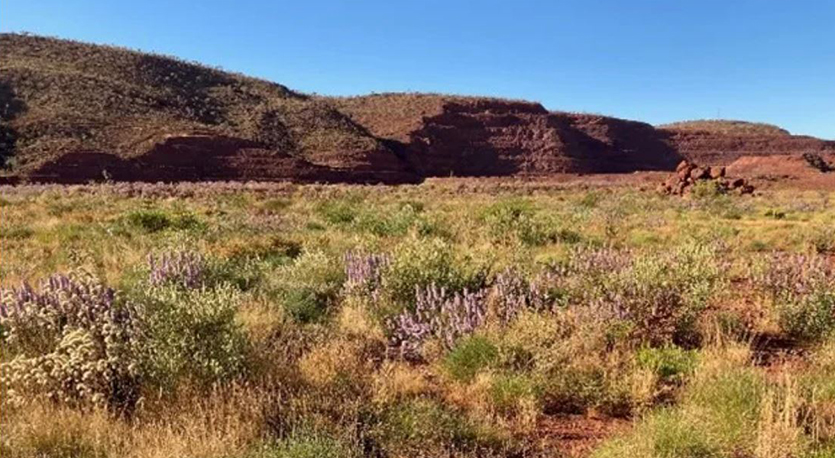
Mine site with successful restoration (work done by CEI:AgER team)
The Seed Flamer
In 2015, Associate Professor Guzzomi and his honours student Alan Ling worked with leading scientists from Kings Park Science, Botanic Gardens and Parks Authority, including Dr Todd Erickson (Ecological Restoration Lead CEI:AgER), who had a strong track record on solving issues around native seeds in mining environments, to invent the Seed Flamer.
With the initial focus on spinifex, the team modified the industry-accepted drum seed coater technology by introducing a flame torch so that the stream of seeds flow through a flame. The seeds are then exposed to brief, controlled and repeated heat to burn off their appendages of awns, hairs, and spikelets.
Their novel approach was game changing for the industry, with several significant benefits arising:
- the ability to process large quantities of seed and remove appendages with precision
- reduced storage requirements for treated seed
- smoother seeds that can easily flow through seeding machines for large scale sowing
- the ability to add seed coatings within the process, to provide nutrients to the seed or help to prevent predation
- increased germinability of seeds, from 0-5% in the past to upwards of 40%
- positive plant establishment required for the large-scale restoration projects in the mining sector
The approach provides regulators confidence to approve future mining operations with a greater degree of certainty that the land could be restored into the future and ecosystems revegetated.
“This technology transforms our ability to treat native seeds needed to revegetate degraded lands in WA and globally.”
Associate Professor Andrew Guzzomi, UWA
Over the past decade the team has worked to further advance the technology, and patents have been awarded in Australia (2021), the USA (2020) and Canada (2024). Along with Masters student Elvan Ling the team also demonstrated the Seed Flamer’s potential to treat over 19 key West Australian restoration species. In order to reveal the Seed Flamer’s value, the CEI:AgER team decided to offer the Flash Flaming Service to industry. Early adopters included long-term research partner BHP and Rio Tinto with 1600kg Flash Flamed seed in the first season, 2022-23. The Seed Flamer’s commercial interest locally and overseas, along with the team’s precision planting machines developed during Dr Monte Masarei’s PhD, proved there was a market need for knowledge-informed eco-tech approaches which would generate significant impact. This laid the foundation for the creation of a spinout company.

The seed flamer removes the appendages using precisely measured flames.
Emergence Ecotech
Native plant re-establishment is required in the heavily regulated mining industry. Emergence Ecotech offers leading research-informed and engineering-developed comprehensive solutions to meet this need.
During Dr Monte Masarei’s PhD, 183 restoration practitioners were surveyed globally which highlighted the need for design improvements to existing mechanised seeding equipment. This led the team to develop a more efficient device, the Megasweeper, to improve restoration success in large-scale restoration through the precision delivery of diverse seed types in challenging slope and rocky landscapes.
The team’s patented technology stack including the Seed Flamer and Megasweeper, and extensive know-how has enabled the founding inventors Associate Professor Guzzomi, Dr Erickson and Dr Masarei to form Emergence Ecotech. Established in October 2024 in partnership with Biologic Seed Pty Ltd, it offers a complete service to optimise native revegetation for large-scale ecological restoration and post mining land rehabilitation from planning, precision treating and seeding.
The service is practical, cost effective and time efficient and will generate significant societal, technological, and economic benefits, and have a profound impact on the future of Australia and Australian lives.
“The market has recognised our technology as a great example of how science in the lab through engineering can be translatable in practical and market-ready ways.”
Associate Professor Andrew Guzzomi, UWA
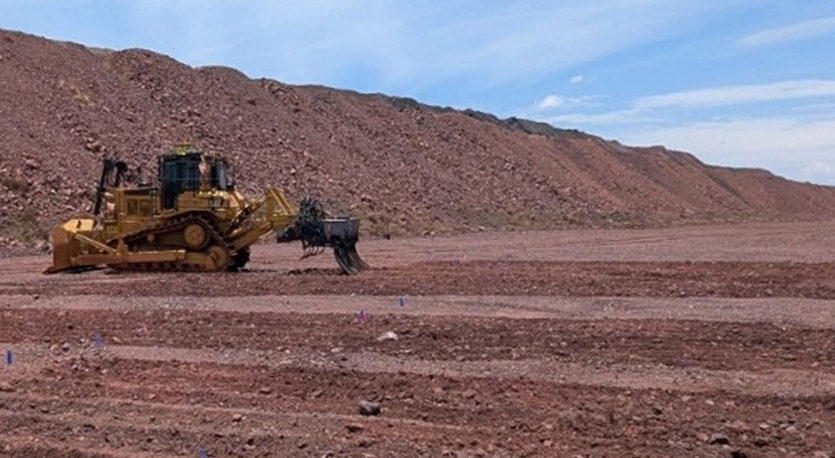
The Megasweeper in action during recent Restoration Engineering Seed Technology Deployment Program (RESTD) trials.
Targeted Tillage
Herbicide resistant weeds in broad acre cropping systems are a major challenge for food production and hence food security. They remove nutrients and moisture, and result in reduced yields.
Prior to 2015, commercially available broad-acre cropping weed control systems during fallow conditions (between crop cycles) offered blanket herbicide treatment – with site-specific herbicide application, ideal for low weed densities, taking off. And whilst blanket tillage is effective, it causes soil disturbance and disrupts the soil structure. This approach for fallow weed control was incompatible with minimal till agriculture. Industry concerns regarding the sustainability of herbicide-reliant weed management systems and soil damage led the team to develop an alternative system.
In 2015, with funding from the Grains Research and Development Corporation (GRDC), the CEI:AgER team and Adjunct Professor Michael Walsh, then a weed scientist at the Australian Herbicide Resistance Initiative (AHRI) developed the Weed Chipper. It uses a targeted tillage approach for fallow weed control, and introduces a practical, site-specific, and non-chemical solution for more sustainable cropping.
The Weed Chipper’s active tyne approach works by triggering the tyne when it senses a weed to chip out, resulting in low soil disturbance of a paddock. Their testing of the approach confirmed very high (90%) weed control efficiency and low levels (1.8%) of soil disturbance.
An important part of the team’s process has been the testing of machines in the paddock by farmers and industry. Their demonstration days in 2019 in New South Wales and Queensland were also very successful, sparking much interest.
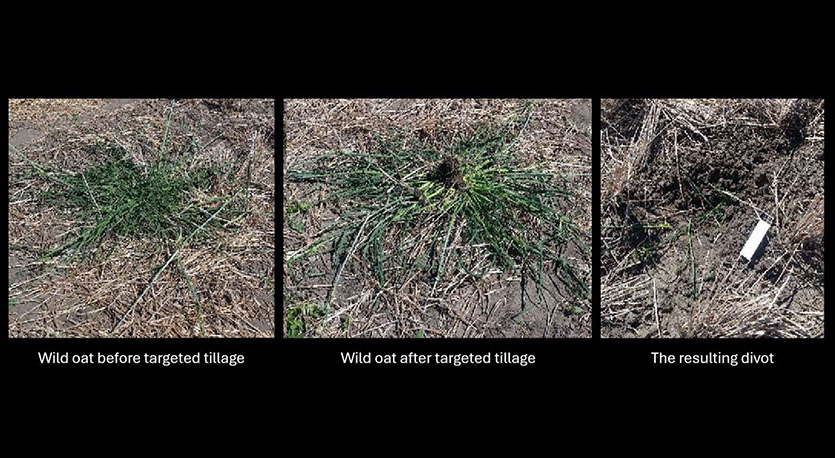
The Weed Chipper can precisely identify and remove weeds, leaving minimal soil disturbance.
Making the most of targeted tillage
Building on their track record, the Department of Agriculture, Fisheries and Forestry funded the team’s 2021 research into a targeted tillage device for the inter-row region (between rows of crops) during the growing season. Their electrically powered active tool approach moves to reducing carbon emissions and further minimises soil disturbance. The team developed a highly novel mode of action permitting fast tractor (platform) speed >15km/h with a slow and low power draw tool motion. The electric control system also allows optimisation of tool control strategy depending on platform use, enabling a chipper motion highly relevant to slow moving robotic platforms.
As a result of growing commercial interest in the Weed Chipper and mechanical weeding approaches, the team have partnered with sustainable crop solutions company Demagtech, who aim to commercialise both pieces of technology to offer solutions for the fallow and in-crop situations across diverse cropping systems.
“Having alternative weeding technology like the targeted tillage weed chipper was a real game changing piece of technology at the time.”
Associate Professor Andrew Guzzomi, UWA
The Weed Chipper and the team’s emerging technologies have significant environmental and economic benefits for farmers, agriculturalists and government bodies. A healthier soil and increased yields with reduced herbicide use flows to consumers, with produce that has less exposure to herbicides.
Globally, herbicide resistance is an ever-evolving challenge for farmers and governments. The team’s novel approaches help remove the reliance on herbicides and offers an alternative policy solution for government bodies managing the land.
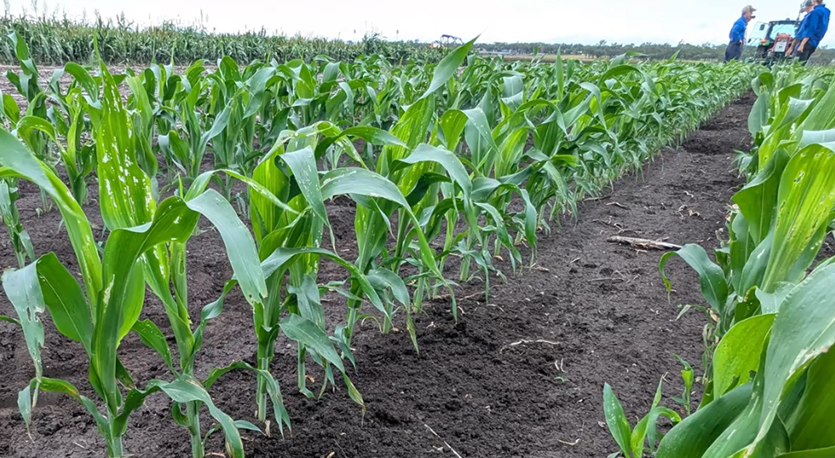
Novel electric rotary in-crop demonstration, Toowoomba 2025
Winners in the Field
For their various technologies, the team have been recognised with a number of awards:
- 2016: WA Innovator of the Year Award for developing the Seed Flamer technology.
- 2018: WA Young Tall Poppy Award.
- 2018: Andrew Guzzomi 40Under40 Award for forging UWA’s agricultural engineering research strength.
- 2019: Andrew Guzzomi appointed UWA’s inaugural agricultural engineer.
- 2019: WA Innovator of the Year Award for developing the Weed Chipper.
- 2022: CEI:AgER official launched by State Innovation Minister The Hon Stephen Dawson MLC.
Together with his multidisciplinary team, Associate Professor Andrew Guzzomi creates solutions that meet industry needs, are innovative in design and approach, and aim to deliver significant benefits to both the users and the broader community.
“It is a very exciting time for the next generation of engineers and scientists working in our Centre on projects that can achieve big outcomes.”
Associate Professor Andrew Guzzomi, UWA
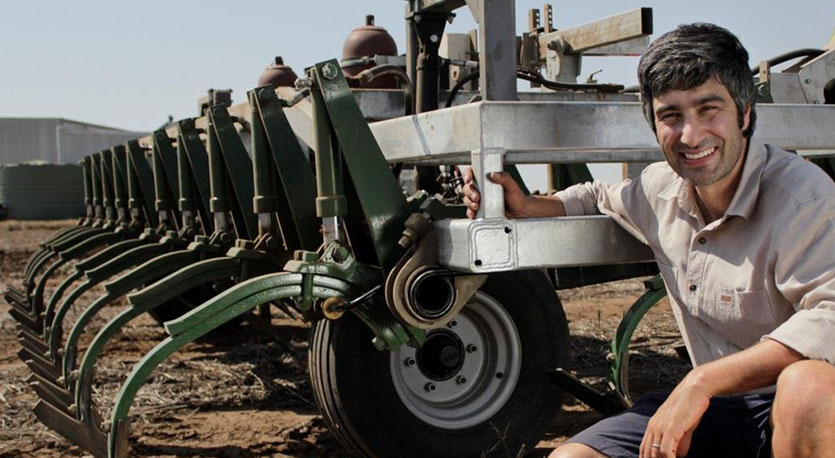
The Weed Chipper’s smart, targeted tillage approach is a game changer for combatting weeds on agricultural land.

 Advancing Nanomaterials from Lab to Market: Ablano’s Journey
Advancing Nanomaterials from Lab to Market: Ablano’s Journey 